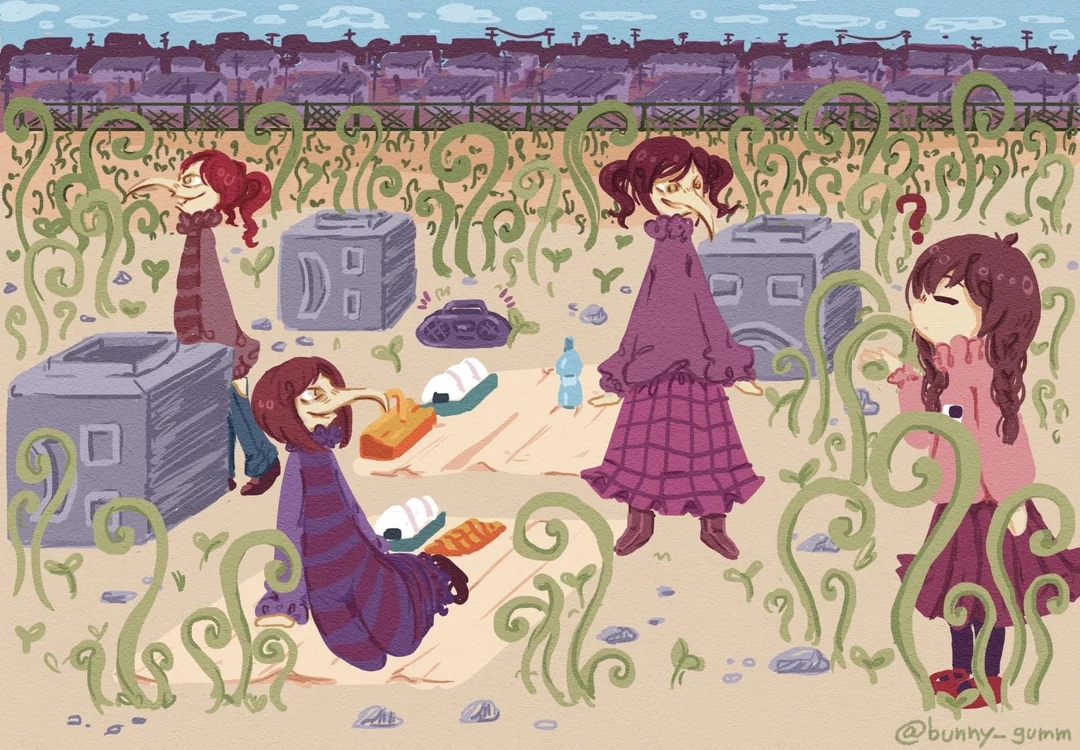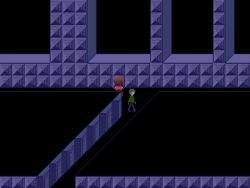Yume Nikki, released in 2004 by Kikiyama, is an avant garde RPGMaker game that took inspiration from another game called "LSD Dream Emulator" that was released for the PlayStation 1 in 1998. The origins of the creator are unknown, however, it's known that he makes digital music, and that Yume Nikki is the only game he has ever released.
Yume Nikki has you play as Madotsuki, a hikikomori girl that never leaves her room, and throughout the game you can only play inside her dreams. There are a various amount of dream worlds and effects that the player can play in, with nearly all of them having their own music and ambiences. Despite the directionless feel of the game, there actually is an ending (of which I wont spoil), but has led to a lot of fan theories about the game's message. The unique nature of Yume Nikki, that being almost no combat and very little RPG elements, had drawn a lot of people to it and made a cult following online. Games like Lcd Dem (Lucid Dream), .flow, and Yume 2kki, are just a few of the many games Yume Nikki had inspired.
Here is a free little stamp for any Yume Nikki fans.
 Disclaimer: Yume Nikki, although never explicit, contains lots of implicit material that can suggest heavy themes, such as sexual assault, neglect, and other forms of trauma. Please acknowledge this before continuing to read this section or engaging with the game.
Disclaimer: Yume Nikki, although never explicit, contains lots of implicit material that can suggest heavy themes, such as sexual assault, neglect, and other forms of trauma. Please acknowledge this before continuing to read this section or engaging with the game.
Despite Yume Nikki being a glorified walking simulator, there are themes and messages portrayed that suggest a story. One of the most obvious aspects are Madotsuki is a shut-in, as she never leaves her room. However, if you go through the dreams of the game you find more clues of her neglect, such as the "Toriningen Party". When Madotsuki is in the Wilderness, she can come across a picnic held by "Bird Humans" (aka, the Toriningen), but she is out of reach from them. This event is inaccessible for her, but even if it were, these people would attack her. The Toriningen are a part of NPCs known as "Chasers" in Madotsukis Dreams, and when they catch Madotsuki she either ends up stuck in a room, or damaged and forced to wake up. The music that plays in this event is the most cheerful of the OST, and it happens to be the most isolating for Madotsuki.

Being an outcast is a persistent theme in the game. The effect that gets you the scarf and beanie is obtainable from an invisible person (Mafurako). NPCs like Monoko and Monoe are in solitary locations, and their respective events display their outsider characteristics. Monoe disappears when interacted with, and Monoko becomes deformed when you use the Stop Light effect. The game overall is very isolating, and with the little amount of NPCs in each world it gives a sense of loneliness. The mall is a great example where, despite there being more NPCs than anywhere else in the game, it is also one of the larger maps. Even when you find someone, you don't get much out of the interactions, and helps communicate to the player that even when an outsider meets someone, she will likely only get a very fleeting interaction.


One of the darkest themes of Yume Nikki that I have found were the implications of sexual assault. One of the most iconic scenes is KyuuKyuu-kun, who is an onomatopoeia for a rubbing noise in Japanese. The way you get to him is by, quite literally, cutting open a zipper. KyuuKyuu-kun is long and phallic in nature, and the idea that he is constantly rubbing a guard rail leads towards more implication. To help disillude the idea that it's a coincidence, Yume Nikki contains lots of imagery and direct drawings of mouths, faces, and objects in the shapes of ovaries and reproductive organs. Upon going up the stairs, and entering an Aztec-like face, the player proctors the "FACE" event. Many fan theories have different thoughts on what the FACE means, however it can mean several things, such as it being the face of the assaulter and it terrifying Madotsuki, some manifestation of her fears, or simply just a random creepy event.

To tie things in back with Hikikomori, Japanese society is very strict, conformative, and structural. People have expectations upon being a certain age, social class is, and your gender. The idea of "Keeping Face" is common spanning all Asian cultures, and Yume Nikki reflects it. Although there is the possibility to Madotsuki being sexually assaulted, it does not seem to be the most reoccuring theme, compared to the sense of loneliness you get. However, the theory is akin to Yuko Tatsushima's "I Can't Be a Bride Anymore", a painting of a sexually assaulted woman who can no longer get married to the man she wants as a result of the assault. The imagery is haunting, with dread in the womans eyes, and the odd proportions that make her seem monsterous. The piece was made to criticize Japanese culture, specifically in regards to expectations of females, including for occurences that cannot be controlled.






